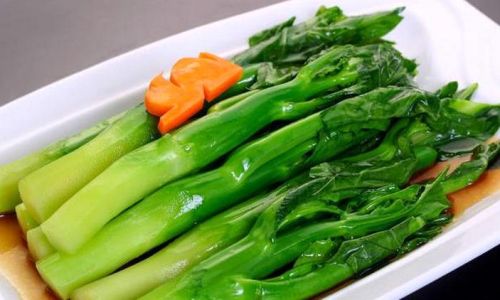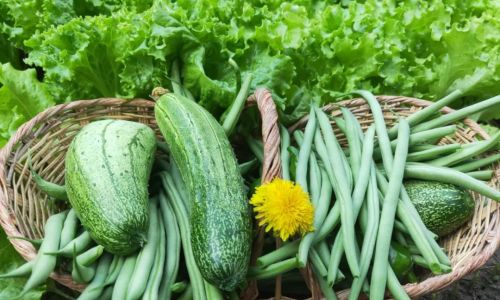Introduction
Incorporating green vegetables into your diet is one of the simplest yet most effective ways to enhance your overall health. These nutrient-dense foods are packed with vitamins, minerals, antioxidants, and fiber, all of which contribute to a stronger immune system, better digestion, and improved mental clarity. Despite their numerous benefits, many people struggle with how to prepare and enjoy green vegetables, often citing their bitterness, texture, or lack of flavor as deterrents. This comprehensive guide aims to demystify the world of green vegetables, offering practical tips on selection, storage, preparation, cooking methods, and creative recipe ideas to help you embrace and love these nutritious gems.
Understanding the Types of Green Vegetables
Before diving into preparation techniques, it’s essential to familiarize yourself with the diverse range of green vegetables available. Each type offers unique flavors, textures, and nutritional profiles, making it essential to vary your intake for a balanced diet.

-
Leafy Greens: This category includes spinach, kale, collard greens, arugula, and lettuce. Leafy greens are rich in vitamins A, C, K, and folate, as well as iron and calcium.
-
Cruciferous Vegetables: Broccoli, cauliflower, Brussels sprouts, and cabbage fall into this group. They are known for their high fiber content, vitamins C and K, and cancer-fighting compounds called glucosinolates.
-
Greens with Stems: Asparagus, green beans, and snap peas are examples. These vegetables are typically low in calories but high in vitamins A and C, fiber, and various antioxidants.
-
Herbs: While often used in smaller quantities, herbs like parsley, cilantro, basil, and mint add flavor and additional nutrients to dishes. They are rich in vitamins, minerals, and essential oils.
-
Sea Vegetables: Such as kelp, nori, and dulse, these marine plants provide unique nutrients like iodine, omega-3 fatty acids, and trace minerals.
Selecting and Storing Green Vegetables
Proper selection and storage are crucial steps in ensuring that your green vegetables retain their freshness, flavor, and nutritional value.
-
Freshness Indicators: Look for vibrant, deep green colors with no signs of yellowing, wilting, or spots. For leafy greens, the leaves should be firm and not overly limp. Cruciferous vegetables should be tight and firm, with no soft spots or discoloration.
-
Storage Tips: Store leafy greens in airtight containers lined with paper towels to absorb excess moisture. Cruciferous vegetables and greens with stems should be kept in crisper drawers of your refrigerator, wrapped loosely in plastic or stored in perforated bags. Herbs can be kept fresh in small glasses of water on the countertop or sealed in plastic bags with a damp paper towel.
-
Avoiding Waste: Plan meals around your vegetables to minimize waste. If you buy in bulk, consider freezing portions for later use, as frozen vegetables retain much of their nutritional value.
Preparation Techniques
The way you prepare your green vegetables can significantly impact their taste and texture. Here are some fundamental techniques to enhance their appeal.
-
Washing: Always wash vegetables thoroughly under running water to remove dirt, pesticides, and other contaminants. For leafy greens, soaking in a sink filled with cold water and then rinsing can help dislodge trapped dirt.
-
Trimming and Peeling: Remove any tough stems, outer leaves, or peels that might be bitter or indigestible. However, be mindful not to over-trim, as some nutrients are found in the peels and stems of certain vegetables.
-
Slicing and Chopping: Cutting vegetables into uniform sizes ensures even cooking. Thinner slices or smaller pieces will cook faster, while larger cuts retain more texture and flavor.
-
Blanching and Steaming: These methods preserve the vibrant color, texture, and nutrients of green vegetables. Blanching involves briefly boiling vegetables in water and then plunging them into ice water to stop the cooking process. Steaming uses moist heat to cook vegetables gently.
-
Sautéing and Roasting: Higher-heat cooking methods like sautéing and roasting can caramelize sugars, adding a depth of flavor. Use minimal oil and avoid overcooking to keep vegetables tender and nutritious.
Cooking Methods
Different cooking methods bring out unique flavors and textures in green vegetables, making it worth experimenting to find your favorites.

-
Steaming: Place vegetables in a steamer basket over boiling water. Cover and cook until tender, checking frequently to avoid overcooking. This method is excellent for preserving nutrients and maintaining vibrant colors.
-
Boiling: While boiling can leach out some nutrients, it’s a quick and easy method for cooking larger quantities. Use a large pot with plenty of water and add a pinch of salt for flavor. Cook until tender but still crisp.
-
Sautéing: Heat a small amount of oil in a pan over medium heat. Add chopped vegetables and cook, stirring occasionally, until they are tender and lightly browned. This method adds a rich, toasted flavor.
-
Roasting: Preheat your oven to around 400°F (200°C). Toss vegetables with olive oil, salt, and pepper, then spread them out on a baking sheet in a single layer. Roast until tender and golden brown, stirring occasionally. Roasting intensifies natural sweetness and creates a delightful crunchy exterior.
-
Stir-Frying: Use a wok or large skillet over high heat with a small amount of oil. Add vegetables in quick succession, stirring constantly, until they are tender-crisp and slightly browned. Stir-frying is perfect for retaining crispness and vibrant colors.
-
Raw Consumption: Many green vegetables, especially leafy greens and herbs, can be enjoyed raw in salads, smoothies, or as garnishes. This method allows you to fully appreciate their fresh, clean flavors.
Creative Recipe Ideas
Now that you know the basics, let’s dive into some creative recipes that showcase the versatility and deliciousness of green vegetables.
-
Green Smoothie Bowl: Blend spinach, banana, avocado, almond milk, and a scoop of protein powder for a creamy, nutritious breakfast. Top with granola, chia seeds, and fresh berries for added texture and flavor.
-
Roasted Brussels Sprouts with Balsamic Glaze: Toss halved Brussels sprouts with olive oil, salt, and pepper. Roast until crispy, then drizzle with balsamic glaze and sprinkle with Parmesan cheese.
-
Asparagus and Avocado Salad: Combine blanched asparagus spears, diced avocado, cherry tomatoes, and red onion. Dress with a lemon-olive oil vinaigrette and garnish with fresh parsley.
-
Green Bean and Almond Stir-Fry: Stir-fry sliced green beans, garlic, and ginger in a hot wok. Add toasted almonds, soy sauce, and a splash of sesame oil for a satisfying, nutritious meal.
-
Kale and Quinoa Power Bowl: Layer cooked quinoa, shredded kale, roasted sweet potatoes, chickpeas, and avocado. Drizzle with tahini dressing and sprinkle with sunflower seeds.
-
Broccoli and Cheese Soup: Steam broccoli florets until tender, then blend with vegetable broth, cream cheese, and a touch of nutmeg. Serve topped with crispy breadcrumbs and a dollop of sour cream.
-
Pesto Pasta with Spinach: Make a fresh basil pesto and toss it with cooked pasta, baby spinach leaves, and grated Parmesan cheese. This dish is quick, easy, and bursting with flavor.
Conclusion
Eating green vegetables doesn’t have to be a chore. By understanding the different types, mastering preparation techniques, experimenting with various cooking methods, and incorporating creative recipes, you can transform these nutritious foods into delicious, satisfying meals. Remember, the key to enjoying green vegetables is to keep an open mind, explore new flavors, and let your culinary creativity shine. With a little practice and a willingness to try new things, you’ll soon discover that green vegetables can be a vibrant, delicious, and essential part of your diet. Happy eating!






0 comments